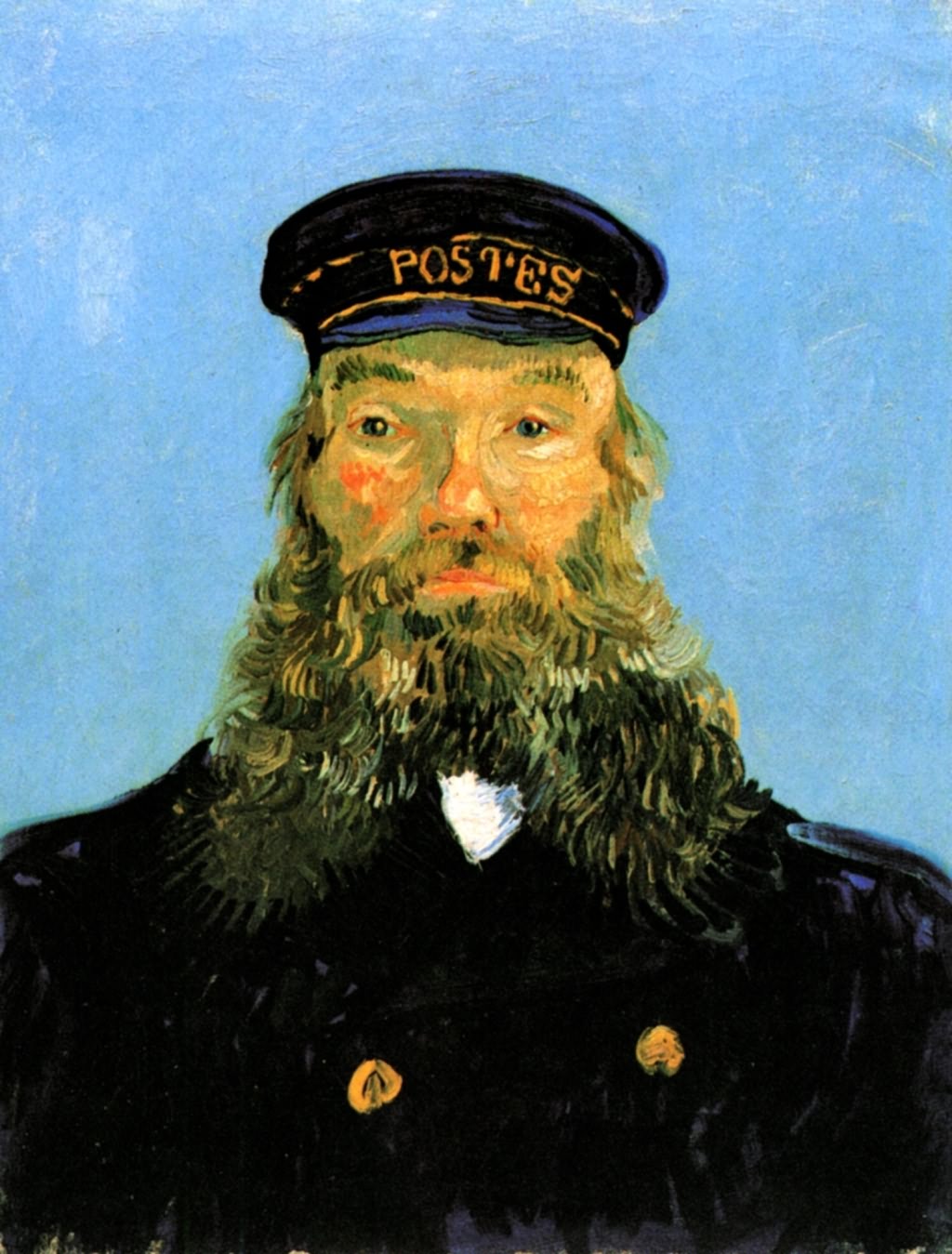Portrait of Postman Roulin
Appreciation

Portrait of Postman Roulin Nederland Vincent van Gogh Gallery and Appreciation
The Roulin Family is group of portrait paintings that Vincent van Gogh executed in Arles in 1888 and 1889 of Joseph, his wife Augustine and their three children: Armand, Camille and Marcelle. This series is unique in many ways. Although Van Gogh loved to paint portraits, it was difficult for financial and other reasons for him to find models. So, finding an entire family that agreed to sit for paintings, in fact for several sittings each was a bounty. Joseph Roulin became a particularly good, loyal and supporting friend to Van Gogh during his stay in Arles. To represent a man he truly admired was important to him. The family, with children ranging in age from four months to seventeen years, also gave him the opportunity to produces works of individuals in several different stages of life. Rather than making photographic-like works, Van Gogh used his imagination, colors and themes artistically and creatively to evoke desired emotions from the audience.
While Van Gogh was living in Arles, Joseph Roulin was working at the railway station, both places close to their lodgings: Roulin and his family in a dead-end street, and Van Gogh just around the corner, at 2 Place Lamartine - and both frequented the Caf├® run by the Ginoux couple, some footsteps further; there Van Gogh had lodged, before he moved to the Yellow House. Roulin was married to Augustine. They had three children: Armand, Camille and Marcelle. Van Gogh painted each of Roulin's family members several times between 1888-1889.
While in Arles, Vincent van Gogh became friends with the postman. Van Gogh painted several portraits of Roulin and his family. RoulinŌĆÖs ŌĆ£silent gravity and tenderness,ŌĆ?and his ŌĆ£strangely pure and touchingŌĆ?voice inspired van Gogh to paint him, commemorating their friendship. Van gogh painted this portrait with oil paints on a canvas in July 1888. Formally, the vast blue expanse of RoulinŌĆÖs coat takes the stage. The lack of contrasting colors within the blue coat and pants makes the plane lack depth. This official tone contrasts with RoulinŌĆÖs personality. The warm skin tones and vibrant reds, yellows, and greens in RoulinŌĆÖs thick beard are a tribute to the friendship van Gogh feels for the postman. This is a theme in impressionism; to paint feelings and ideas not otherwise visible using vibrant colors and brush strokes. Van Gogh emphasizes pinks in RoulinŌĆÖs cheeks, lights in RoulinŌĆÖs eyes, and the gentility of his hands to demonstrate aspects of RoulinŌĆÖs personality. The use of color, lighting, and brush stroke show the candour and intelligence van Gogh saw in the postman Roulin.